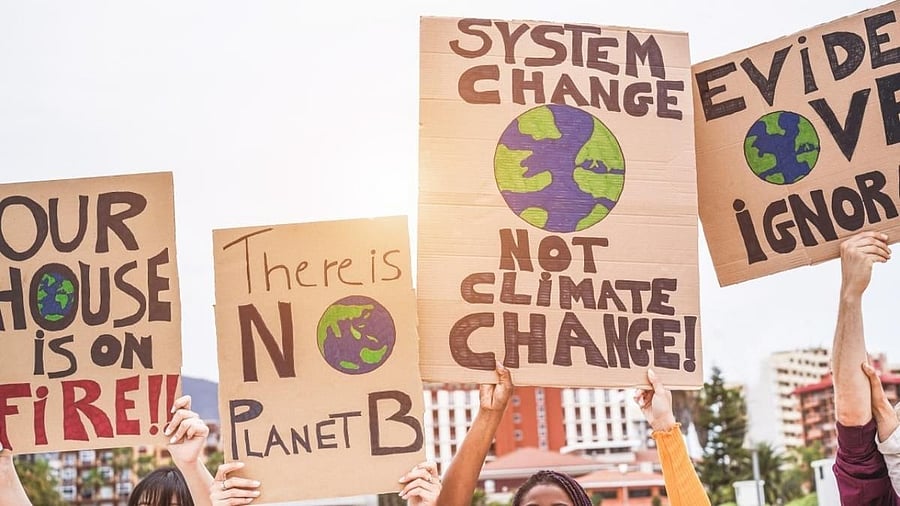
Representative image showing banners held by climate activists.
Credit: iStock photo
Mumbai: As climate and ecological pressures mount, governments worldwide are increasingly recognising the need to align fiscal policy with environmental objectives, states a new briefing note by the Institute for Energy Economics and Financial Analysis (IEEFA).
This approach helps policymakers make informed decisions that promote low-carbon growth, sustainable use of natural resources, and climate resilience.
The note reviews how both developed and developing countries are adopting green budget frameworks (GBFs), assessing their implementation, benefits, and key lessons. It examines experiences across Europe, Organisation for Economic Cooperation and Development (OECD), the Asia-Pacific, and Africa-Latin America, focusing on tools, institutional mechanisms, integration with national strategies, and emerging innovations.
Several key takeaways emerge for effective policy design. Climate budget tagging serves as a pragmatic entry point but must evolve into performance-based budgeting frameworks and robust impact assessments to be truly transformative. Importantly, green budgeting must be tailored to national contexts, grounded in development priorities and climate vulnerabilities.
“Advanced economies such as those in the EU and OECD have progressively embedded climate performance criteria into their core budgetary and fiscal planning processes, leveraging mature institutions and data systems,” says Gaurav Upadhyay, Energy Finance Specialist at IEEFA and the author of this briefing note.
“Similarly, many emerging economies are in the process of adopting foundational green budgeting tools such as climate budget tagging, with a strong emphasis on transparency, capacity building, and empowering subnational actors,” he added.
In developing countries, digital public financial management tools, and climate data infrastructure are also part of a successful framework.